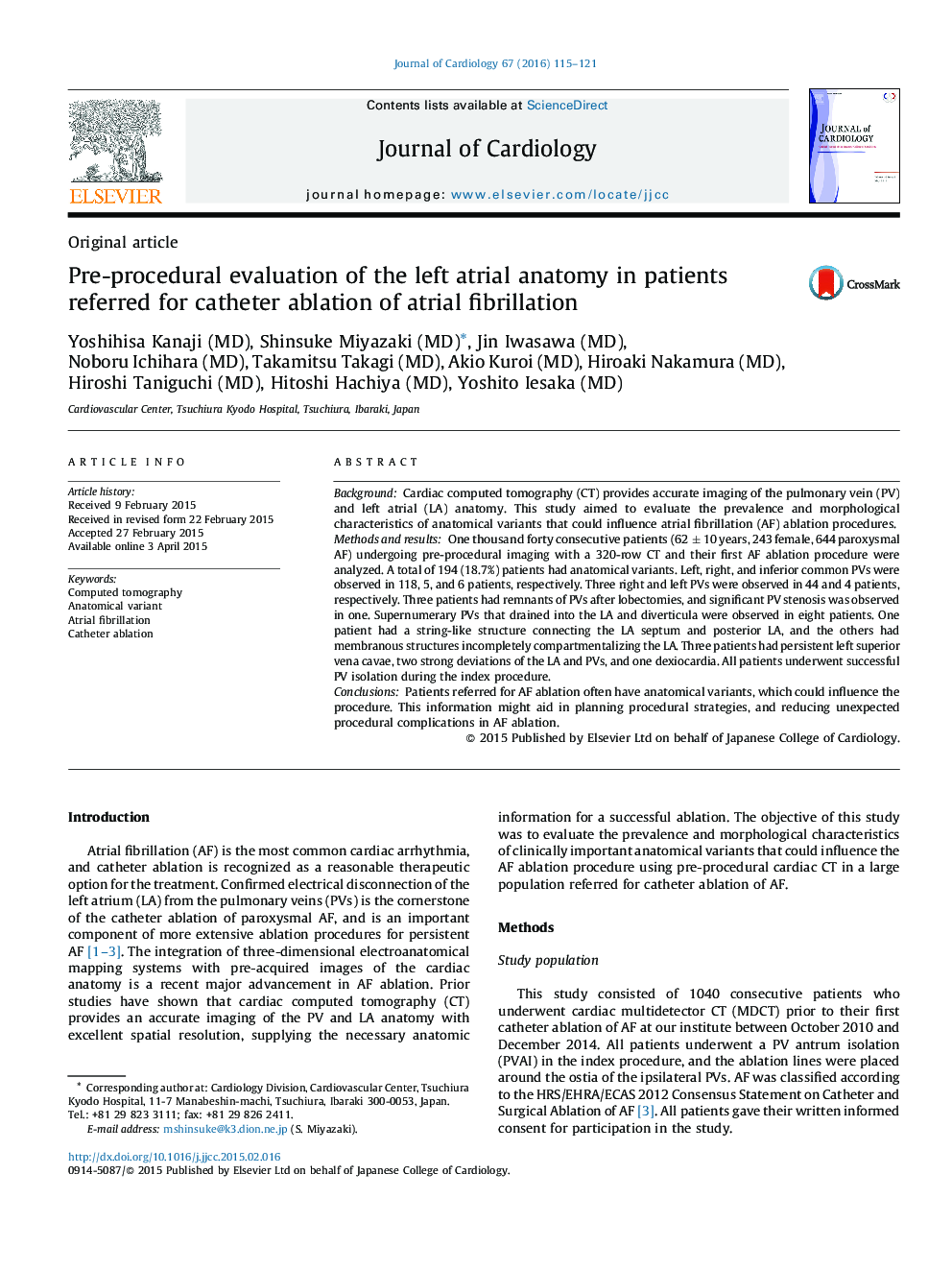| Article ID | Journal | Published Year | Pages | File Type |
|---|---|---|---|---|
| 2962913 | Journal of Cardiology | 2016 | 7 Pages |
BackgroundCardiac computed tomography (CT) provides accurate imaging of the pulmonary vein (PV) and left atrial (LA) anatomy. This study aimed to evaluate the prevalence and morphological characteristics of anatomical variants that could influence atrial fibrillation (AF) ablation procedures.Methods and resultsOne thousand forty consecutive patients (62 ± 10 years, 243 female, 644 paroxysmal AF) undergoing pre-procedural imaging with a 320-row CT and their first AF ablation procedure were analyzed. A total of 194 (18.7%) patients had anatomical variants. Left, right, and inferior common PVs were observed in 118, 5, and 6 patients, respectively. Three right and left PVs were observed in 44 and 4 patients, respectively. Three patients had remnants of PVs after lobectomies, and significant PV stenosis was observed in one. Supernumerary PVs that drained into the LA and diverticula were observed in eight patients. One patient had a string-like structure connecting the LA septum and posterior LA, and the others had membranous structures incompletely compartmentalizing the LA. Three patients had persistent left superior vena cavae, two strong deviations of the LA and PVs, and one dexiocardia. All patients underwent successful PV isolation during the index procedure.ConclusionsPatients referred for AF ablation often have anatomical variants, which could influence the procedure. This information might aid in planning procedural strategies, and reducing unexpected procedural complications in AF ablation.
